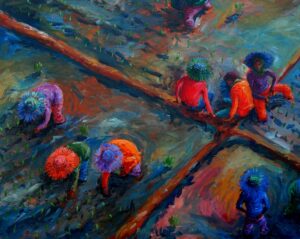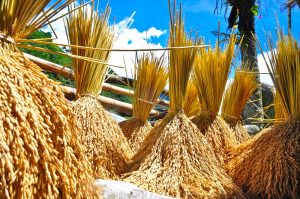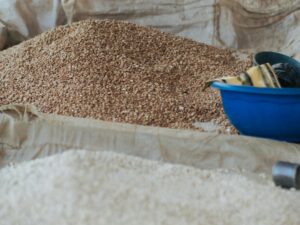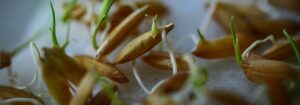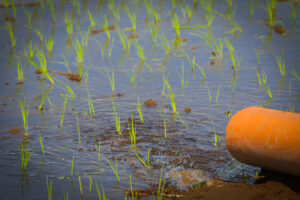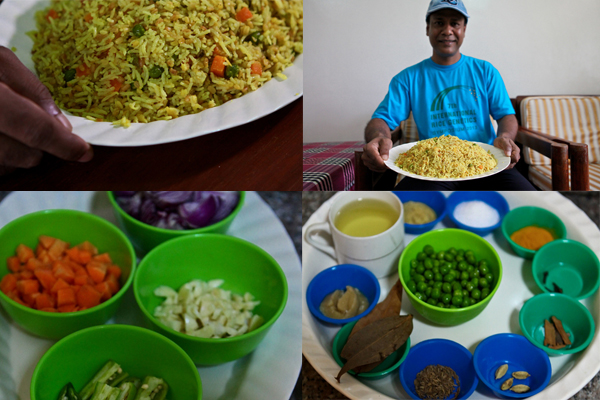
Bhuna khichuri is a very popular and common dish in Bangladesh and some parts of India that is usually prepared during rainy days or on special occasions. Its main ingredients are rice and protein-rich pulses. This makes it a highly nutritious but also delicious meal.
The dish is usually prepared using aromatic and slender-type rice such as kalizira, chinigura, badsha bhog, katari bhog, basmati, or jasmine. Bhuna khichuri can be served with fried ilish (a popular fish in Bangladesh), beef or chicken, fried egg, or vegetables for vegetarians.
Ingredients
• 8 cups water (boiling)
• 3 cups rice (basmati or other aromatic rice, prewashed)
• 1½ cups roasted pulses (mixture of lentil, black gram, and mung bean, roasted)
• 1 cup soybean oil
• 50 grams green peas
• 4 pieces green chili peppers
• 4 pieces cardamom
• 4 cinnamon sticks
• 3 onions (medium size, cut into very thin pieces)
• 3 cloves
• 2 bay leaves
• 1 whole garlic (chopped)
• 1 piece carrot
• 2 tablespoons salt
• 1 tablespoon ginger
• 1 tablespoon butter fat or ghee1
• ½ teaspoon cumin powder
Directions
1. Fry the onions in soybean oil until brownish in color. Adding a pinch of salt will make this quicker.
2. Add garlic, cumin, bay leaf, cinnamon, cardamom, green chilli peppers, carrot, ginger, and green peas and fry for 2–3 minutes.
3. Add rice and roasted pulses into the mixture and fry for 6–8 minutes.
4. Add butter oil or ghee and turmeric powder.
5. Add boiling water and the rest of the salt into the mixture. Cover the pot and wait for another 8–10 minutes.
6. Serve with fried fish, beef, chicken, fried egg, or any kind of vegetable.
_________________________________________
1 Ghee is the pure butterfat left over after the milk solids and water are removed from butter. It is commonly used in South Asian cooking.
_________________________________________
Rafiq is a plant breeder at the International Rice Research Institute. He is now involved in the development of rice that can withstand a certain amount of salinity for the poor farmers of South Asia such as those in coastal areas of Bangladesh. When not busy breeding salt-tolerant rice, he gets hold of spices such as turmeric, cumin, cinnamon, etc., and helps whip up something in the kitchen for his wife and his son and daughter.

